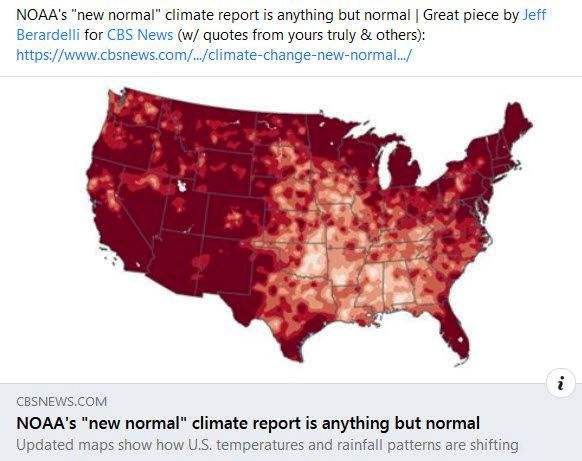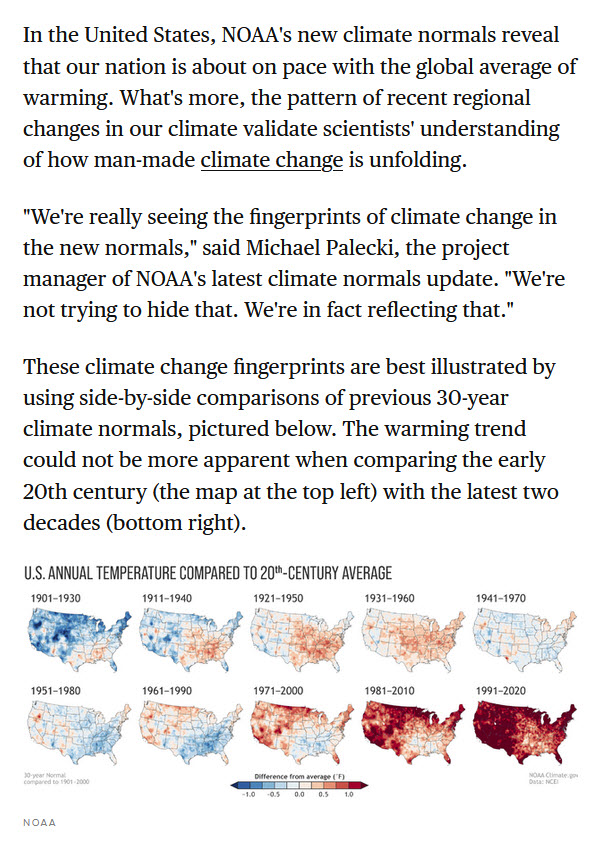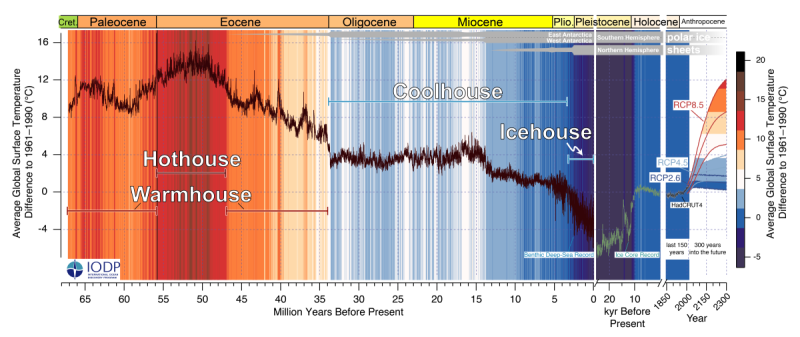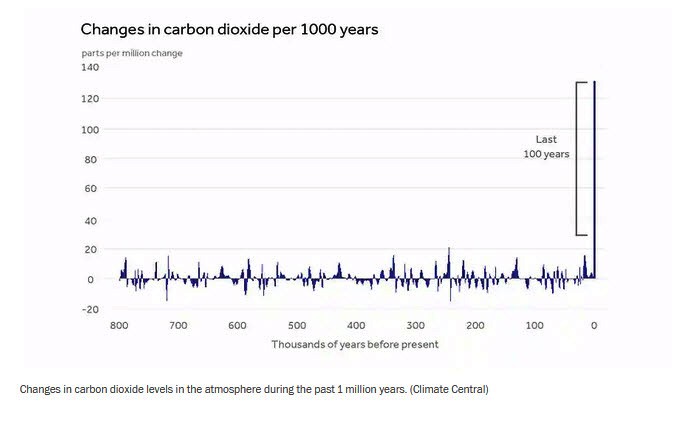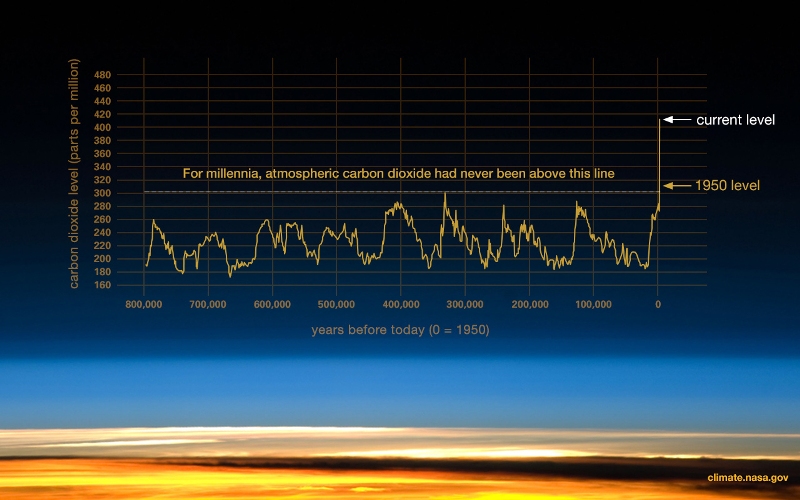Too Hot: Difference between revisions
Siterunner (talk | contribs) No edit summary |
Siterunner (talk | contribs) No edit summary |
||
| Line 4: | Line 4: | ||
Life in Florida is going to soon be different, as Steve Schmidt explains at GreenPolicy360. Not just in being at the frontlines of global sea-level rise, but in being a peninsula on 'karst', an ancient seabed of limestone that has become chock full of climate-change denying politicos and out-of-control development. Our state's former governor, now US Senator, denied climate change was a problem, and forbade | Life in Florida is going to soon be different, as Steve Schmidt explains at GreenPolicy360. Not just in being at the frontlines of global sea-level rise, but in being a peninsula on 'karst', an ancient seabed of limestone that has become chock full of climate-change denying politicos and out-of-control development. Our state's former governor, now US Senator, denied climate change was a problem, and [https://www.greenpolicy360.net/w/File:Three_UnWise_Monkeys_on_the_beach_via_wiki.jpg forbade state government officials from even using the term 'climate change'] .... but the new governor, fortunately, yesterday, signed a first-ever piece of legislation to establish a state climate-related resiliency program. So there... progress. | ||
Until the state of Florida changes in more ways to become forward-looking, perhaps a quick look at sea-level rise would be a place to start our new GreenPolicy "Too Hot" page. | Until the state of Florida changes in more ways to become forward-looking, perhaps a quick look at sea-level rise would be a place to start our new GreenPolicy "Too Hot" page. | ||
Revision as of 15:35, 13 May 2021
When it gets too hot....
Life in Florida is going to soon be different, as Steve Schmidt explains at GreenPolicy360. Not just in being at the frontlines of global sea-level rise, but in being a peninsula on 'karst', an ancient seabed of limestone that has become chock full of climate-change denying politicos and out-of-control development. Our state's former governor, now US Senator, denied climate change was a problem, and forbade state government officials from even using the term 'climate change' .... but the new governor, fortunately, yesterday, signed a first-ever piece of legislation to establish a state climate-related resiliency program. So there... progress.
Until the state of Florida changes in more ways to become forward-looking, perhaps a quick look at sea-level rise would be a place to start our new GreenPolicy "Too Hot" page.
-- SJS -- Maybe 13, 2021
May 2021
Miami gets a "Chief Heat Officer"
by Craig Pittman / Via the Washington Post
Jane Gilbert, the city’s new chief heat officer, says she will put together a task force of experts to address the problem
Last June, Miami reported its hottest temperatures on record. The daytime sun was brutal and there was little respite even at night. Dozens of heat-related deaths were reported that year.
As the Earth warms, the city by the ocean says its heat problem is poised to become even deadlier.
Miami-Dade County Mayor Daniella Levine Cava (D) recently announced the county was creating a first-of-its-kind position — chief heat officer.
“We know extreme heat does not impact people equally — poorer communities and Black and Hispanic people bear the brunt of the public health impacts,” the mayor said in a statement. A chief heat officer will “coordinate our efforts to protect people from heat and save lives.”
Q: But heat is such a fact of life in Miami. What makes that deserving of a chief officer?
A: Miami knows heat — we’re hot and humid a good part of the year. A heat index of 105 degrees is about when you’ve hit dangerous levels, when people could really suffer from heatstroke.
We currently have an average of seven days where we get over that heat index for a couple of hours. By mid-century, we’re going to have 88 of those days — that’s more than 10 times as many days....
Q: How can you answer someone who challenges the existence of climate change?
A: We don’t have many of them in Miami-Dade County.
I’ve felt the change in the heat in the 26 years I’ve been here. It’s hard to argue that heat can’t be a risk when you’ve seen people die. It’s the number one climate- and weather-related killer in the United States.
Read Craig's Full Interview with Jane Gilbert
··················································································
NOAA's "new normal" climate report is anything but normal
By Jeff Berardelli
May 8, 2021 / 7:11 AM / CBS News
It doesn't take a climate scientist to see the changes that have occurred. In the maps below, using NOAA data, Climate Central illustrates the warmer temperatures the U.S. has experienced. When comparing the latest "normals" to what used to be normal a century ago, the difference is clear — seen in red from coast to coast...
Some climate scientists, like Michael Mann of Penn State, don't love the system of reporting new normals. As he told The Associated Press, Mann prefers using a constant baseline because updating what is normal for present-day conditions obscures the long-term warming trend and makes the warming due to climate change seem less significant. "Adjusting normal every 10 years perverts the meaning of 'normal' and 'normalizes' away climate change."
US Climate Normals
The U.S. Climate Normals are a large suite of data products that provide information about typical climate conditions for thousands of locations across the United States. Normals act both as a ruler to compare today’s weather and tomorrow’s forecast, and as a predictor of conditions in the near future. The official normals are calculated for a uniform 30 year period, and consist of annual/seasonal, monthly, daily, and hourly averages and statistics of temperature, precipitation, and other climatological variables from almost 15,000 U.S. weather stations.
National Centers for Environmental Information (NCEI) generates the official U.S. normals every 10 years in keeping with the needs of our user community and the requirements of the World Meteorological Organization (WMO) and National Weather Service (NWS). The 1991–2020 U.S. Climate Normals are the latest in a series of decadal normals first produced in the 1950s. These data allow travelers to pack the right clothes, farmers to plant the best crop varieties, and utilities to plan for seasonal energy usage. Many other important economic decisions that are made beyond the predictive range of standard weather forecasts are either based on or influenced by climate normals.
🌎
From Clearwater, Florida
GreenPolicy360 Siterunner/SJS:
Trendlines, we are looking at trendlines today. Data, the data changing as time passes. We need to step back and have perspective. We need to look closely, to 'drill down' and see with detail. Measure-to-Manage NASA says, science advises, GreenPolicy360 recommends as a guide.
GreenPolicy360 believes in personal responsibility to manage wisely. We are planet citizens and earth is in human hands. Together we are guiding our planet home into the future. We are delivering a legacy to future generations.
And we are watching our progress, for good and bad.
One of GreenPolicy360's great concerns is climate change, as all our readers and sharers know. A recent study of a 'new normal' caught our attention today, a global study and national breakout of data changing over time. And as we are looking at this 'new normal' data, a century of temperatures, we cannot help but think what will happen if the temperature increases continue, a trendline into the future, up and up into the 'unliveable... uninhabitable' temperatures range. 'Cooling technology' will be required and being outdoors will be limited...
Let's look more closely.
Let's look at a recent feature news 'wrap up' from a science reporter for the Associated Press.
Here, look.... recognize the threats. Act planet citizens, act ....
Billions projected to suffer nearly unlivable heat in 2070
By Seth Borenstein
May 4, 2020
(AP) — In just 50 years, 2 billion to 3.5 billion people, mostly the poor who can’t afford air conditioning, will be living in a climate that historically has been too hot to handle, a new study said.
With every 1.8 degree (1 degree Celsius) increase in global average annual temperature from man-made climate change, about a billion or so people will end up in areas too warm day-in, day-out to be habitable without cooling technology, according to ecologist Marten Scheffer of Wageningen University in the Netherlands, co-author of the study.
'How many people will end up at risk depends on how much heat-trapping carbon dioxide emissions are reduced and how fast the world population grows.
Under the worst-case scenarios for population growth and for carbon pollution — which many climate scientists say is looking less likely these days — the study in Monday’s journal Proceedings of the National Academy of Sciences predicts about 3.5 billion people will live in extremely hot areas. That’s a third of the projected 2070 population.
Future of the Human Climate Niche
Proceedings of the National Academy of Sciences of the U.S.
May 26, 2020
Significance
We show that for thousands of years, humans have concentrated in a surprisingly narrow subset of Earth’s available climates, characterized by mean annual temperatures around ∼13 °C. This distribution likely reflects a human temperature niche related to fundamental constraints. We demonstrate that depending on scenarios of population growth and warming, over the coming 50 y, 1 to 3 billion people are projected to be left outside the climate conditions that have served humanity well over the past 6,000 y. Absent climate mitigation or migration, a substantial part of humanity will be exposed to mean annual temperatures warmer than nearly anywhere today.
Abstract
All species have an environmental niche, and despite technological advances, humans are unlikely to be an exception. Here, we demonstrate that for millennia, human populations have resided in the same narrow part of the climatic envelope available on the globe, characterized by a major mode around ∼11 °C to 15 °C mean annual temperature (MAT). Supporting the fundamental nature of this temperature niche, current production of crops and livestock is largely limited to the same conditions, and the same optimum has been found for agricultural and nonagricultural economic output of countries through analyses of year-to-year variation. We show that in a business-as-usual climate change scenario, the geographical position of this temperature niche is projected to shift more over the coming 50 y than it has moved since 6000 BP. Populations will not simply track the shifting climate, as adaptation in situ may address some of the challenges, and many other factors affect decisions to migrate. Nevertheless, in the absence of migration, one third of the global population is projected to experience a MAT >29 °C currently found in only 0.8% of the Earth’s land surface, mostly concentrated in the Sahara. As the potentially most affected regions are among the poorest in the world, where adaptive capacity is low, enhancing human development in those areas should be a priority alongside climate mitigation.
~
- Air Quality
- Air Pollution
- Agriculture
- Alternative Agriculture
- Antarctica
- Anthropocene
- Arctic
- Atmospheric Science
- Citizen Science
- City Governments
- Climate Change
- Climate Migration
- Climate Policy
- County Governments
- Desertification
- Digital Citizen
- Earth Imaging
- Earth Observations
- Earth360
- Earth Science
- Earth Science from Space
- Earth System Science
- Ecology Studies
- Eco-nomics
- Economic Justice
- Education
- Energy
- Environmental Laws
- Environmental Protection
- Environmental Security
- Environmental Security, National Security
- ESA
- European Union
- Externalities
- Extinction
- Florida
- Food
- Forests
- Fossil Fuels
- Greenland
- Global Security
- Global Warming
- Green Networking
- Green Best Practices
- Green Politics
- Health
- INDC
- Maps
- Money in Politics
- NASA
- NOAA
- Natural Resources
- Networking
- New Definitions of National Security
- New Economy
- New Space
- Oceans
- Ocean Science
- Online Education
- Planet Citizen
- Planet Citizens
- Planet Citizens, Planet Scientists
- Rainforest
- Renewable Energy
- Resilience
- Sea-level Rise
- Sea-Level Rise & Mitigation
- Social Justice
- Soil
- Solar Energy
- Strategic Demands
- Sustainability Policies
- Threat Multiplier
- United Nations
- US
- US Environmental Protection Agency
- Water Quality
- Whole Earth
- Wind Energy
- World Bank
- World Wide Web
- Youth

